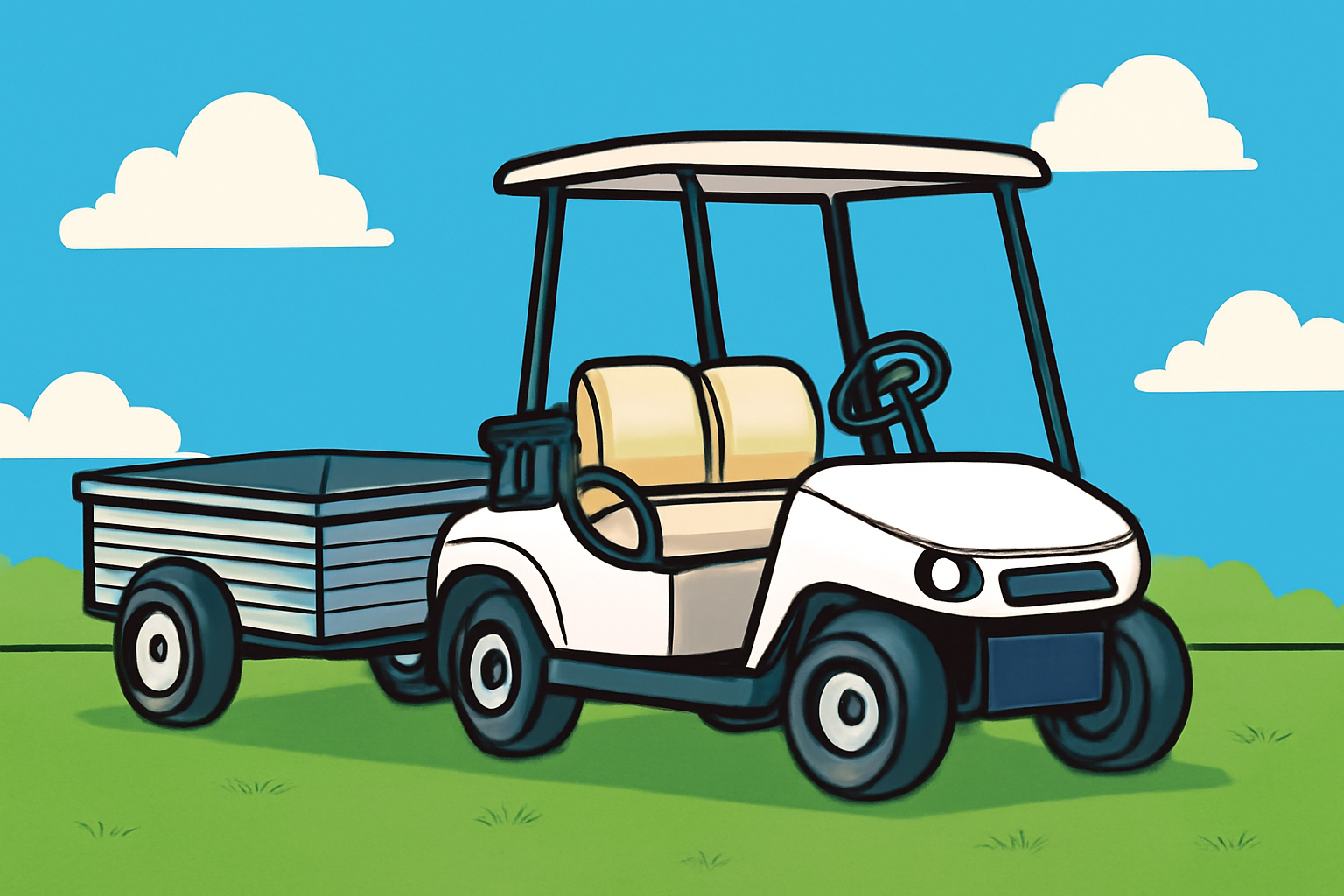-
Shopping Tools
-
Care & Maintenance
-
About
-
Dealer Login

Adding a hitch to your golf cart is a simple way to increase its utility, allowing you to tow small loads, trailers, or other equipment. This guide will show you how to install a hitch on your golf cart and answer common questions about towing capacity and safety.
Yes, you can put a hitch on most golf carts. Adding a hitch is a popular upgrade for those who use their golf cart for more than just playing a round of golf. Whether you want to tow a small trailer, transport equipment, or haul supplies around your property, a hitch can make your golf cart much more versatile. However, it's essential to ensure that your golf cart is equipped to handle towing, as not all carts are designed for heavy-duty hauling.
The amount of weight a golf cart can tow depends on several factors, including the cart’s make and model, the motor type (electric or gas), and the condition of the cart. On average, most golf carts can tow between 500 and 1,000 pounds. Electric carts tend to have a lower towing capacity compared to gas-powered carts. It’s important to consult your golf cart’s manual or manufacturer to determine the exact towing capacity for your specific model.
Installing a hitch on your golf cart is a relatively straightforward task that most owners can handle with basic tools. Follow these steps to add a hitch to your cart:
The first step is selecting the correct hitch for your golf cart. There are different types of hitches available, including ball hitches, pin hitches, and universal hitches. When choosing a hitch, ensure that it is compatible with your cart's model. Many golf carts come with a pre-designed location for hitch installation, so make sure the hitch you purchase fits in that area.
You’ll need a few basic tools to install the hitch on your golf cart, including:
If you need to access the rear frame of the cart, you may want to lift it slightly using a jack. Ensure the cart is stable and secure before proceeding with the installation. Lifting the cart can make it easier to work on the hitch and help you see the mounting area clearly.
Most golf carts are designed with a pre-existing mounting point for the hitch. This point is usually located at the rear of the cart, near the bumper or under the rear seat area. If your golf cart doesn’t have a designated spot for the hitch, you may need to drill holes into the frame to install it. However, it’s best to check the manufacturer’s recommendations to avoid drilling into sensitive areas.
Once you’ve located the mounting area, attach the hitch bracket to the frame of your golf cart. If the bracket comes with pre-drilled holes, line them up with the corresponding holes on the frame. Use the screws and bolts to secure the bracket in place. Tighten them using a wrench or socket set, but be careful not to overtighten, as this can damage the frame or the hitch bracket.
After securing the hitch bracket, attach the hitch receiver to the bracket. This is the part of the hitch that will connect to the trailer or towing device. Depending on the type of hitch, you may need to use a pin to lock the receiver in place or secure it with bolts. Double-check all connections to ensure that everything is tightly secured.
Before you start towing anything, test the hitch to ensure that it is securely attached and functioning correctly. Gently push or pull the cart to check for any wobbling or instability. If everything is in place, you're ready to start towing!
While installing a hitch on your golf cart is relatively easy, there are some important things to keep in mind:
Adding a hitch to your golf cart is a great way to increase its functionality and make it more versatile. By following the steps above and keeping in mind the important considerations for towing capacity and safety, you can easily install a hitch and start using your golf cart for light hauling.
